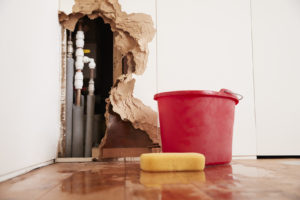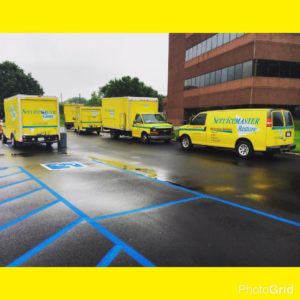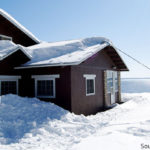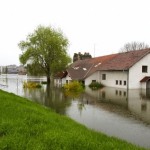Water damage is one of the most common disasters for property owners, due to the number of potential sources. But letting it go untreated is a big mistake; it won’t be long before it spreads and encourages mold growth, ultimately creating a bigger problem.
Water damage can be costly to fix, but taking care of it in the moment of finding it can mean the difference between a few hundred and a few thousand dollars. As soon as you find the mess, make sure to call a professional water damage restoration service right away to prevent it from spreading and dry out the affected area. They will also disinfect the area to prevent any mold from growing on the building materials.
Also keep in mind that some kinds of water damage can be hidden such as starting behind the walls or under floors. Here are some common places that you will want to check on a frequent basis.
Most Common Places for Finding Water Leaks
1. Water Pipes
Pipe bursts are among the most common water disasters for property owners. Especially with old plumbing systems as well as low temperatures in the winter time, pipes can develop fissures and burst from increased water pressure. If you hear any dripping or less water pressure coming out of the faucet, be sure to check the pipes thoroughly.
2. Water Heaters
If water heaters are old and/or corroded, they can leak or even burst, sending water throughout the surrounding area. To check if there is a leak, remove the drain pipe and listen for a hissing sound. If there is a leak, here are some tips on what to do.
3. Sump Pumps
Sump pumps can fail during any big storm, resulting in a flooded basement. Make sure to monitor the pump closely during these storms and repair them right away. Afterwards, consider scheduling an annual maintenance service to inspect its condition and prevent future disasters.
4. Gutters
Many sources of the water damage can be derived from the outside. If the gutters and downspouts are clogged, water can spill over and sink into the foundation, causing the basement to flood. This is especially common in the fall time. During this time, make sure that all gutters are clear of leaves, sticks, dirt, and other debris.
5. Sinks and Showers
Sinks and showers are among one of the most common interior sources of water damage. Holes in shower lines as well as deteriorated caulking can lead to water sinking into a number of building materials.
6. Washing Machines
Each washing machine cycles handles around 15 – 30 gallons of water at a time. Within the washer there are small holes that allow the water to drain out through a tube into the drain. If these become loose or damaged, it can result in significant water damage.
7. Air Conditioner
It’s normal to find moisture around this appliance and this shouldn’t cause any damage to the surrounding building materials. But when you see the air conditioner dripping water, it can lead to warping, discoloring, and even permanent damage to the structure around and below it. To inspect it, check the condensate pump, refrigerant, and drain line for any leaks.
8. Air Ducts
As the air conditioning unit is connected to the air ducts, moisture is easily able to accumulate within the ductwork and cause a leak. If you find any condensation within the duct work or air vents, the leak may be in another area. Professional air duct cleaning can help to prevent this in the future.
9. Refrigerator and Freezer
In order to make ice, water is consistently flowing through the refrigerator and freezer. Be sure to inspect the area frequently by unplugging the appliance and checking the back of the appliance. A leak will usually be the result of a small hole in the tubes.
10. Toilets
You may not think so, but these can clog and even create a sewer backup if they overflow. They may also leak water around the rim if the seal is worn. Make sure to frequently check for any puddles and if so, shut off the water and inspect the tank. If there is any damage, you may have to call a plumber.
Water Damage Restoration from Leaks
As soon as you find a leak, make sure to cut off the source right away, or have a plumber come to help. Then call a water damage cleanup professional to repair the structure. If not, the damage can spread, encouraging mold growth to develop around the affected area.
One professional provider includes ServiceMaster. With years of experience and training, these professionals will be on their way soon after receiving your first call. As soon as they arrive, they will remove the source, if it hasn’t been removed already, extract the water, and start the drying process by setting up professional restoration equipment. They will also prevent the risk of mold growth by disinfecting the area and eliminating any bacteria from the wet materials.
Finally, you can expect complete peace of mind after an efficient and effective service.






